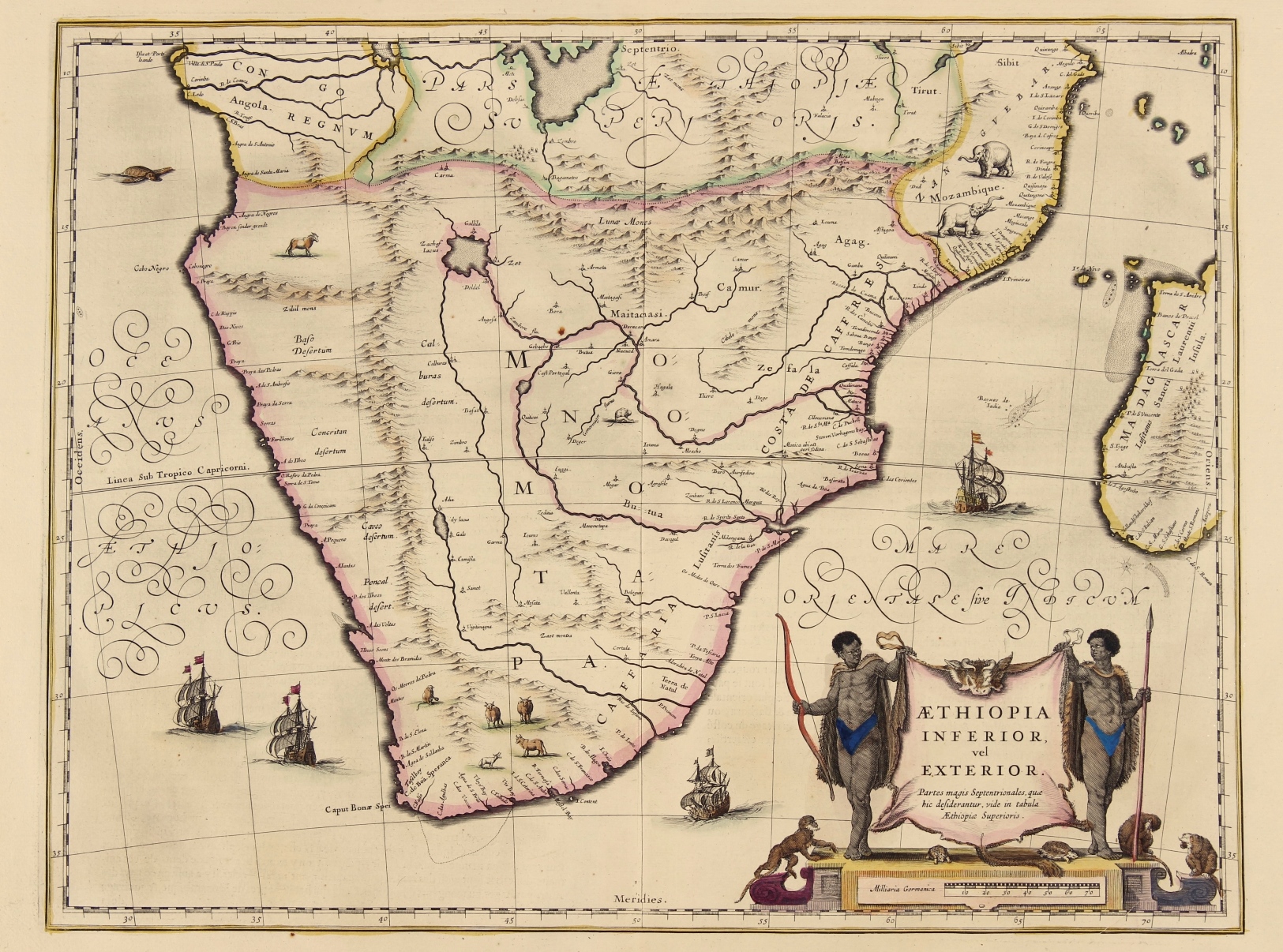“Aethiopia Inferior, vel Exterior“. Copper engraving first published in 1635 by the house of Blaeu in Amsterdam. Size: 38,5 x 49,5 cm. With original hand colouring.
Attractive map of Southern Africa, shortly before the first Dutch settlement in the region. The map was largely based on Portuguese exploration, both real and imagined. The area shown is from the Congo River basin around the Cape of Good Hope and up the east coast as far as northern present-day Mozambique. A good number of coastal names are given, including Mozambique Island which was an important re-supply point for ships sailing to India and the East. To the north just below the equator, we see one of the lakes described by Claudius Ptolomaeus in the 2nd century AD, thought to be the source of the Nile. Information on the interior is sparse, reflecting the lack of knowledge the Europeans had about the interior of Africa. Unlike many other maps which are filled in with fanciful or fictitious information, this map more accurately portrays actual knowledge.
This was the standard map of South Africa throughout the 17th century after which many maps were copied. The cartouche depicts two native Africans holding up an ox skin bearing the map title. At their feet are monkeys and tortoises.
Price: SOLD


